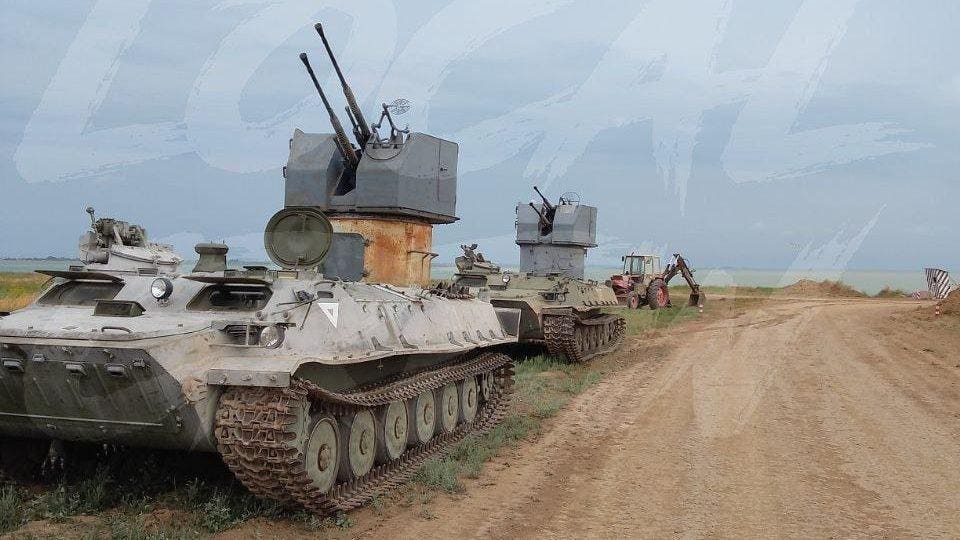Remember those 80-year-old naval guns that Russian marines bolted to 70-year-old armored tractors and rushed to the front line in Ukraine starting this spring?
It always was obvious that the MT-LB-2M-3 was a desperate military’s partial solution to an urgent problem. Deep losses of purpose-built air-defenses and infantry-support weapons compelled the Russians to make do with whatever old vehicles and weapons they had lying around.
But now we’ve seen a video of an MT-LB-2M-3 actually firing its over-under 25-millimeter cannons—and it’s apparent the Frankenstein’s monster of a combat vehicle is even less than the sum of its crude parts.
The video, which circulated on social media on Monday, confirms what many observers suspected: the 1950s-vintage 2M-3 turret, in its MT-LB application, is totally unstabilized. The vibration from firing the first few rounds all but guarantees that subsequent rounds will fly well wide of their target.
It’s not for no reason that gun-stabilization was one of the major advancements in ground warfare in the 20th-century. New optics and fire controls were helping gun crews to spot targets and aim fast-firing weapons over ever greater distances.
But this extended fighting range meant next to nothing if a gun couldn’t fire more than one round accurately. By adding gyroscopes and hydraulics to gun mounts, World War II weapons-designers kept the guns steady even as the attached vehicles bounced and lurched.
Over the next several generations of weaponry, designers added electrical stabilizers and computer-aided aiming, adding stability across multiple planes. Today, a U.S. Army M-1 tank can shoot its 120-millimeter gun, accurately and out to distance of two miles, at a rate of 10 rounds a minute—all while the tank rolls across rough terrain at a speed of 30 or 40 miles per hour.
Stabilization is why a Ukrainian MT-LB with a modern BM-7 autocannon turret can fire accurately—and why a Russian MT-LB with an obsolete 2M-7 turret can’t fire accurately.
Russian observers anticipated this problem when they first glimpsed the MT-LB-2M-7s this spring. “There is some feeling that the hydraulics of the 2M-3 were abandoned and switched to fully manual guidance, since this is the simplest solution that does not require labor—but predictably affects the effectiveness of firing,” Edward Perov, a close observer of Russian combat vehicles in Ukraine, noted on his blog.
The MT-LB-2M-3’s lack of stabilization is especially galling considering that even the Russian ZSU-23-4—a tracked air-defense vehicle mounting quad 23-millimeter cannons that first appeared in the mid-1960s—has hydraulic stabilization augmented by a computerized “kinematic roll circuit.” And the aging ZSU-23-4 isn’t exactly know for its stability while firing.
It seems that Russian marine brigades drove the production of the MT-LB-2M-3 this spring as they prepared to meet the Ukrainian armed forces’ widely-anticipated southern counteroffensive.
We subsequently caught glimpses of the crude vehicles protecting trench-digging crews against Ukrainian drones, but other than that we have scant evidence that the Frankenvehicles have made any meaningful contribution to the Russians’ defensive campaign.
And no wonder: an MT-LB-2M-3 can do little more than spray its guns in the general direction of enemy forces, while its crew prays for a lucky hit.
Read the full article here





